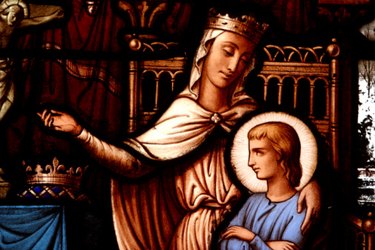
The Medieval Era, or Middle Ages, ran from the fall of Rome until the beginning of the Renaissance in Europe, or roughly from the fourth to the early 16th century. Most of the art of this time was created for the church to glorify God more than appeal to aesthetic sensibilities. Art subjects were almost always the holy family and the saints, but sometimes paintings and sculptures depicted war themes or animals and nature. There were some regional influences, with the most striking being the Islamic culture with its mosaics, sculpted arches and Middle Eastern rugs. These elements came into Europe through Spain and the south.
Medieval Architecture
Video of the Day
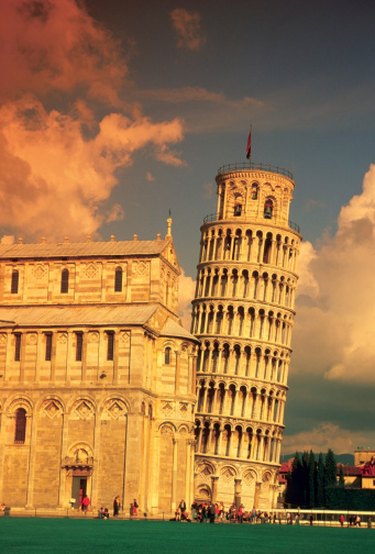
Two styles of architecture emerged during the Middle Ages. The first was Romanesque, which was the trend in the 11th and 12th centuries. This style was thick, heavy and closed, and characterized by rounded arches. The other style was the much more open and lighter Gothic style, which is characterized by pointed arches. This style began evolving in the 12th century, especially in cathedral architecture, and was designed to reach high into the sky to help people imagine the heavens. Notre Dame in Paris is a famous example of a Gothic cathedral.
Video of the Day
Illuminated Manuscripts
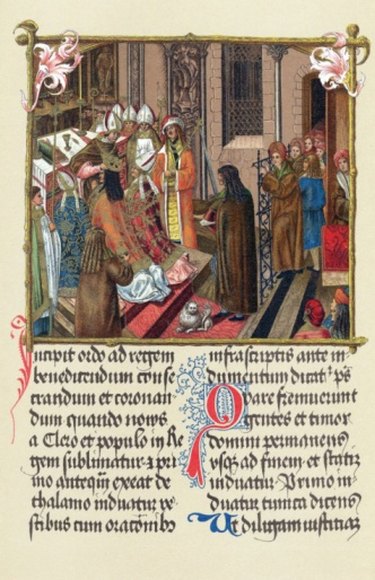
Illuminated manuscripts are books that have been decorated, sometimes elaborately, with precious paints and gold leaf. Usually, this work was done by monks in scriptoriums (the library in a monastery) and took months or even years to complete. Before the invention of the printing press, the copying of books was done by hand. The covers of such books were also decorated, sometimes with gold, other precious metals and gemstones. Most of the time, these elaborately decorated books were holy books used in the church service or mass, but sometimes books of hours got this treatment, too. These were a kind of perpetual calendar designed to guide people through the seasons and cycles of life.
Medieval Painting
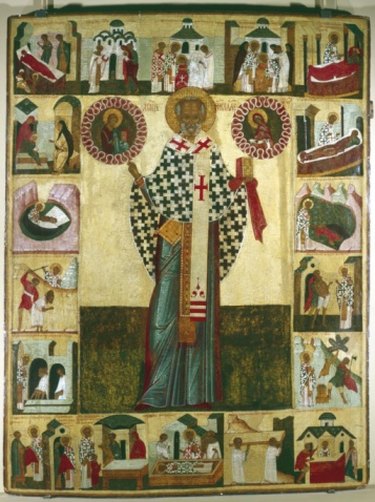
Medieval paintings usually depict religious subjects or topics of war. The practice of portrait painting did not begin until the end of the medieval era. Human faces in paintings throughout the era were very flat, unrealistic and looked alike. Human and animal body parts are disproportionate and usually elongated. Medieval painters had not yet learned how to handle perspective, so architecture and landscapes are awkward.
Medieval Sculpture
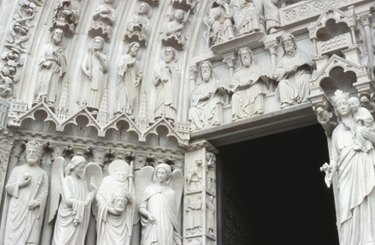
Medieval sculpture, like the paintings from that era, usually depict topics of religion and war. Also like the paintings, human bodies are disproportionate and perspective is not realistic. One of the most common examples of medieval sculpture is the Pieta, or Jesus on his mother Mary's lap. Sometimes Jesus is depicted as a baby, with Mary sitting rigidly straight with her arms around him like a throne. Sometimes he is depicted as a grown man, just after being taken down off the cross. Another common kind of medieval sculpture technique is the relief, in which figures seem to have their backs glued to the wall. Only 180 degrees of the figure are visible.